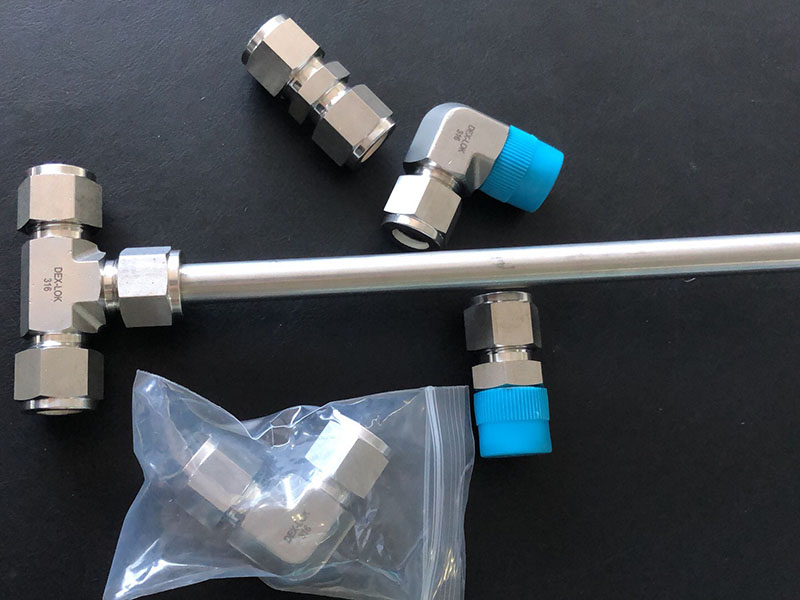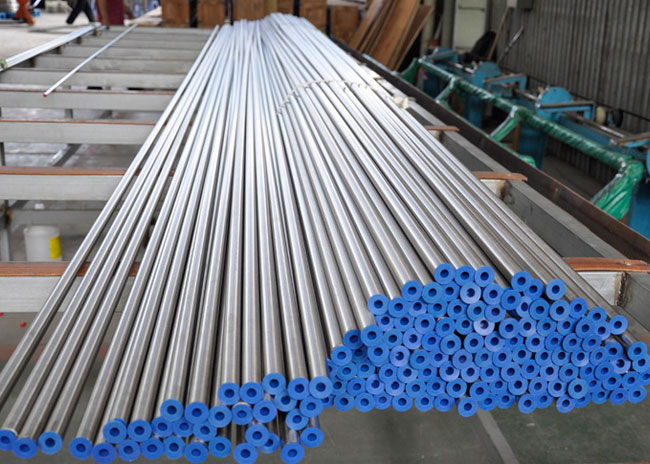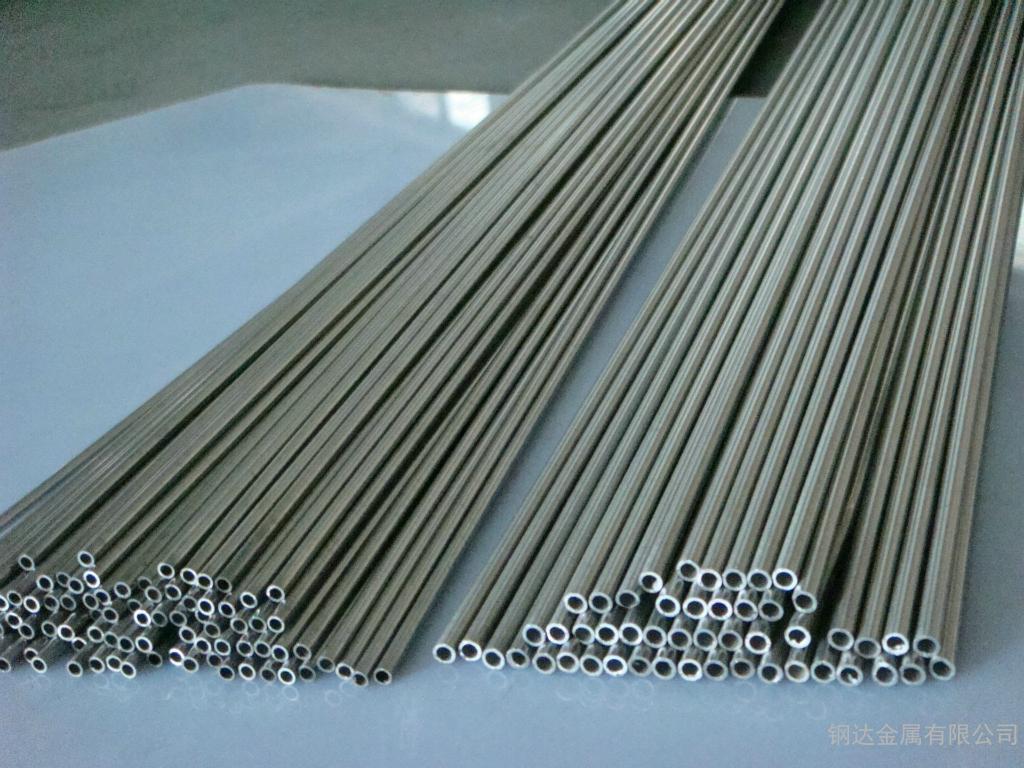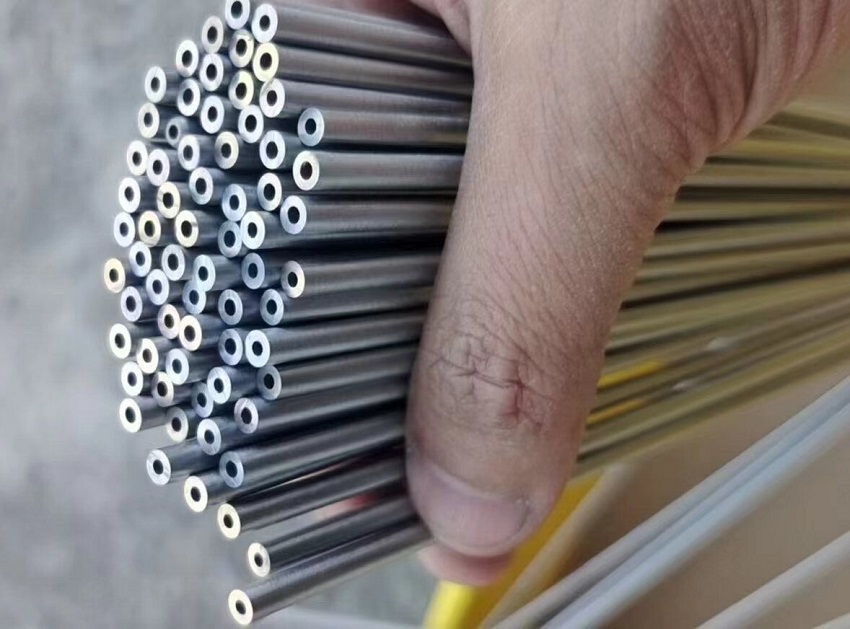NEWS CENTER
Common hydraulic pipeline connection methods
Common hydraulic pipeline connection methods
Common hydraulic pipeline connection methods include: sleeve coupling connection, JIC 37-degree fitting connection, end-forming connection (Walform), socket welding connection, butt-welding connection, and GS non-welding flange system connection.
1. Sleeve Coupling Connection
Pressure Range: 250 – 800 Bar; Applicable Steel Pipe Size Range: 4 – 42 mm; Applicable Materials: Carbon steel and stainless steel.
Sleeve coupling fittings consist of three parts: the fitting body, sleeve, and nut. When the sleeve and nut are inserted into the fitting body on the steel pipe and the nut is tightened, the outer end of the sleeve fits against the conical surface of the fitting body, and the inner edges evenly bite into the seamless steel pipe, forming an effective seal.
Advantages: Widely applicable and mature; relatively low-cost components; no special machinery required.
Disadvantages: Only suitable for pipe connections below 42mm; not suitable for thin-walled pipes; requires significant installation space and torque during installation; not suitable for high safety requirement conditions; cannot be used in conditions of strong vibration, impact, and pulsation.
2. JIC 37-Degree Fitting Connection
Pressure Range: 420 Bar (250 Bar, 100 Bar); Applicable Steel Pipe Size Range: 6 – 38 mm; Applicable Materials: Carbon steel, stainless steel, brass, copper alloys, etc.
JIC 37-degree fitting connections consist of three parts: the fitting body, sleeve, and nut. After the sleeve and nut are inserted into the steel pipe, the pipe end is formed by expanding equipment, and then the fitting body is tightened with the nut, sealing rigidly through conical surface contact and O-ring seal.
Advantages: Widely applicable and mature; wide range of applicable materials; simple and convenient installation; can be repeatedly assembled and disassembled.
Disadvantages: Only suitable for pipe connections below 38mm; low nominal pressure (except for DNV standards); not suitable for thick-walled pipes; requires end-forming equipment.
3. End-Forming Connection (Walform)
Pressure Range: 250 – 800 Bar; Applicable Steel Pipe Size Range: 4 – 42 mm; Applicable Materials: Carbon steel, stainless steel, copper alloys, etc.
Walform connection is an alternative connection method to sleeve coupling. After the nut is inserted into the steel pipe, the pipe end is automatically extruded and formed by forming equipment, and then the fitting body is tightened with the nut, sealing rigidly through the fitting body and forming surface and the seal ring.
Advantages: Low torque and safe installation; fast and simple production process; advanced technology with no leakage; can be repeatedly assembled and disassembled.
Disadvantages: Only suitable for pipe connections below 42mm; requires end-forming equipment.
4. Socket Welding Connection
Pressure Range: 420 Bar (only applicable to small pipe diameters); Applicable Steel Pipe Size Range: 6 – 150 mm; Applicable Materials: Carbon steel and stainless steel.
Socket welding connection involves inserting the pipe into the valve body for welding, forming a connection similar to an internal thread connection after shaping.
Advantages: Widely applicable; low-cost components; advanced technology with no leakage; simple connection method for low-pressure systems.
Disadvantages: Requires skilled welders; requires welding equipment, good ventilation environment, and fire protection measures; requires special cleaning and corrosion protection; can lead to environmental pollution.
5. Butt-Welding Connection
Pressure Range: 500 Bar (only applicable to small pipe diameters); Applicable Steel Pipe Size Range: 6 – 608 mm; Applicable Materials: Carbon steel and stainless steel.
There are butt-welding flange connections and butt-welding joint connections.
Advantages: Widely applicable; low-cost components; advanced technology with no leakage; simple pipe-to-pipe connection.
Disadvantages: Requires skilled welders; requires welding equipment, good ventilation environment, and fire protection measures; requires special cleaning and corrosion protection; can lead to environmental pollution.
6. GS Non-Welding Flange System Connection
Pressure Range: 690 Bar (420 Bar, 350 Bar, 210 Bar, 50 Bar…); Applicable Steel Pipe Size Range: 16 – 608 mm; Applicable Materials: Carbon steel, electroplated steel, stainless steel, copper-nickel alloys, aluminum-copper alloys, dual-phase stainless steel, super dual-phase stainless steel, titanium, etc.
GS non-welding flange system connections include GS retaining ring flange connection system, GS 37-degree expanding flange connection system, and GS 90-degree expanding flange connection system.
Advantages: Wide range of applicable materials; high cleanliness; simple and convenient low-torque, low-space installation; leak-free connection; environmentally friendly.
Disadvantages: Lack of price competitiveness for pipe connections below 1"; requires end-forming equipment.

Hydraulic pipeline connection methods
请输入搜索关键字
确定






